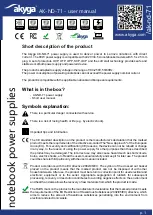
13
JCB-JS800
Instruction & User Manual
Lever Position 2 - Medium Pendulum
Material:
m
For cutting wood and plywood.
Lever Position 3 - Large Pendulum
m
For fast cutting wood and plywood.
m
Only for cutting in straight cuts.
When using pendulum strokes, cutting edges
may splinter more than when working with
linear strokes. Brittle coatings on soft sub-
strates - e.g. laminated board are particularly
prone to this occurring.
NOTE
Dust Removal
The jig saw is equipped with a dust blower
function.
m
Set the dust removal switch to II to open
the blower outlet. Dust is then blown away
from the blade automatically, improving
visibility of the cut.
m
Set the switch to I to close the outlet. When
connecting an extractor to the dust nozzle
(see next chapter), set the switch to the I
position.
Dust Collection
m
The jig saw can produce a lot of dust.
By connecting the machine to a suitable
extractor, this can be significantly reduced.
Dust extraction is not possible on mitre cuts.
NOTE
m
Slide the nozzle all the way into the opening
until the snap-in nose visibly and audibly
locks into place.
m
Connect the dust nozzle to a suitable
extractor or vacuum cleaner.
Wood dust can be particularly hazardous. It is
recommended to use additional dust protec-
tion masks when cutting these materials.
WARNING!
Parallel Stop
To cut parallel to a material edge you can use
the included parallel stop. In order to fix the
parallel stop:
m
Loosen the 2 fastening screws.
m
Insert the stop into the foot.
m
Using the centimetre scale on the parallel
stop, adjust the distance between the stop
bar and the saw blade.
m
Secure the parallel stop by tightening the
fastening screws.
When not using the parallel stop, tighten the
fastening screws securely. Vibration during
normal use can cause them to work loose.
NOTE
Maintenance
Switch off the tool and disconnect the power
(remove battery/unplug) before cleaning and
maintenance. This helps avoid the risk of
electric shocks and accidental starting.
WARNING!
m
Wipe the tool with a dry or damp cloth.
Do not use a wet cloth.
Do not use
detergent that contains solvent or
corrosive, abrasive additives.
This risks
damaging the surfaces of the tool.





































